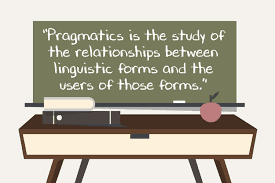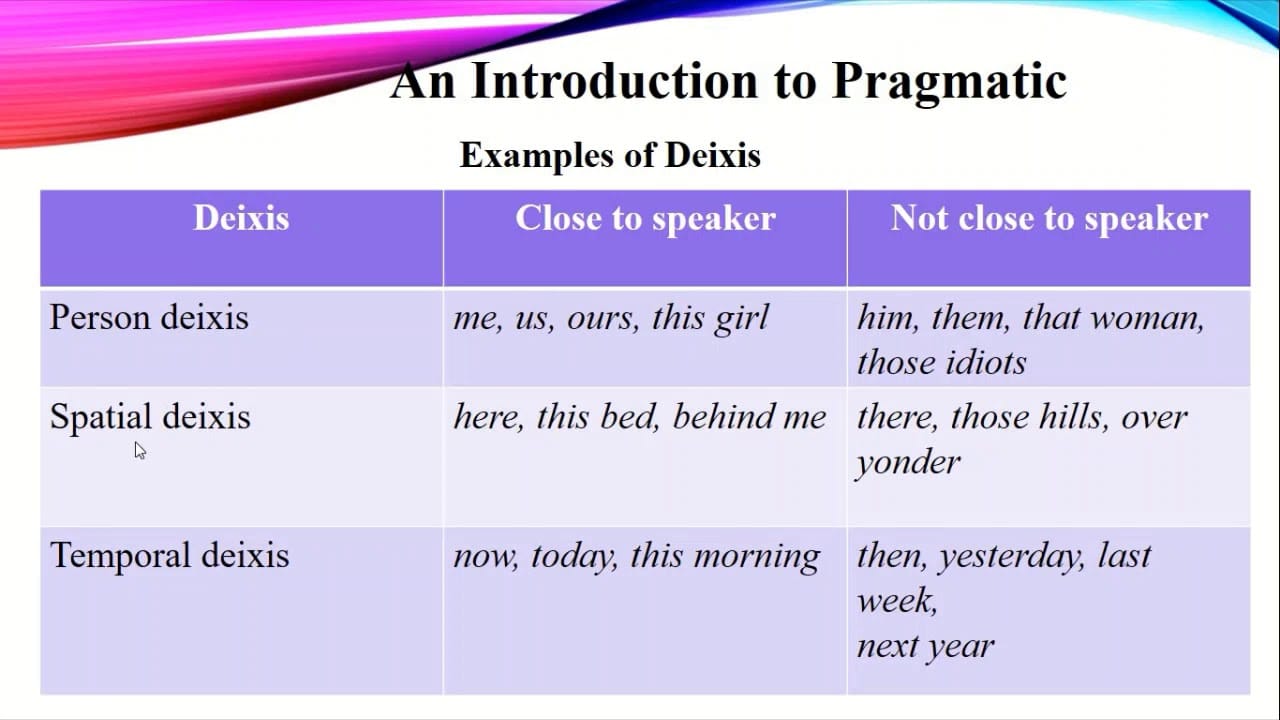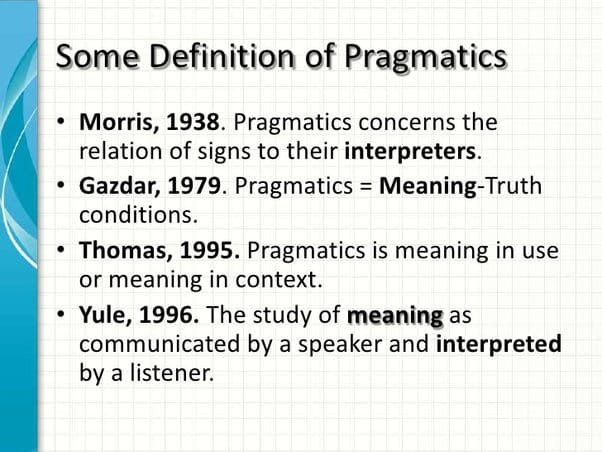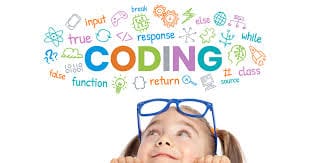The Role of Pragmatics in Understanding Everyday English Conversations
Working as a content writer has taught me one big truth: writing the right words is not enough—understanding the pragmatic meaning behind them is everything. I’ve drafted emails that were grammatically perfect but came across as too blunt. I’ve created blogs where the intended meaning was lost because the context wasn’t clear enough. That’s when I realized that pragmatics isn’t just for classrooms—it’s for anyone who wants to communicate better at work, in writing, or in life.
When we talk about learning English, most people immediately think of grammar, vocabulary, and pronunciation. But there’s another vital piece of the puzzle—the role of pragmatics in the english language . Pragmatics focuses on how language use is influenced by social contexts, cultural norms, and the intended meaning behind words and phrases. For learners of the English language, understanding pragmatics is essential for holding natural conversation, avoiding misunderstandings, and developing fluency in real-world communication.
Think about it: Have you ever answered a question correctly in English but felt that your response didn’t communicate what you intended? Or maybe you’ve heard someone speak perfect American English, yet their response sounded awkward or “off”? That’s where pragmatics steps in. It is the invisible layer of language that goes beyond grammar and vocabulary, allowing speakers to convey the intended meaning and understand the subtle nuances of discourse.

For learners, pragmatics is the bridge between knowing English and using English effectively. Without it, a student might construct flawless sentences that sound blunt, inappropriate, or confusing in daily conversations. This blog will explore the role of pragmatics in English linguistics , how it shapes communication, and strategies for teachers and learners to master it in different contexts.
What Is Pragmatics and Why It Matters in English Language Learning
Pragmatics is the science of how people use language in context. It goes beyond the literal meaning of words to include how speakers adjust their word choice, tone, and expressions depending on the social context.
But the more I worked as a content writer, the more I realized: pragmatics is everywhere. It’s in the polite “Could you please…” I add to client emails instead of a blunt “Send me this.” It’s in the way I change my tone depending on whether I’m writing for school students, adults, or professionals.
Pragmatics isn’t just about words—it’s about what those words do in social contexts. I’ve seen how two sentences with the same grammar can carry completely different intended meanings. For English learners, this is the bridge between just “knowing” English and actually using it in the messy, unpredictable, real world.

At its core, pragmatics answers questions such as:
What is the speaker’s intended meaning?
How does context influence communication?
What cultural or social rules affect the interpretation of language?
For instance, if someone says, “Can you open the window?”, they are not questioning your ability to perform the action—they are making a polite request. Understanding pragmatic meaning allows learners to interpret such functions and phrases correctly, rather than focusing solely on grammar.
Pragmatic competence—the ability to understand and produce language that is socially and contextually appropriate—is what separates someone who knows English from someone who can communicate naturally and effectively. In classroom instruction, this competence helps students not only form correct sentences but also understand different ways of expressing ideas in different situations.
Moreover, pragmatics is closely linked to culture. How we greet someone, express disagreement, or make a request can vary widely across other cultures, even when the words are grammatically correct. For learners, developing a reference point for these cultural differences is essential. Without it, even the most knowledgeable person can struggle to engage meaningfully in conversation.
How Pragmatics Shapes Everyday English Conversations
I’ve lost count of the number of times I’ve misread a conversation because I focused only on the literal words. For instance, once a colleague said, “This draft is interesting.” At first, I thought it was a compliment. Later, I realized it was polite code for “This needs a lot of work.” That’s pragmatics in action—the hidden signals that make or break communication.
Even simple phrases like, “It’s cold in here,” aren’t always about the weather. In the office, that could mean, “Please close the window,” or in a meeting, it could be an indirect way to signal discomfort. What I love about pragmatics is that it forces me to listen between the lines. And that’s exactly what English learners need too. Once they catch these subtleties, their conversations start flowing more naturally, and they begin to communicate like native speakers instead of robots following grammar rules.
Everyday conversation relies heavily on pragmatics. In different contexts, the meaning of a phrase or sentence can shift depending on who is speaking, where, and why. Pragmatic skills allow learners to interpret these nuances and respond appropriately.

1. Understanding Indirect Meaning
English is full of indirect expressions. For example, when someone says, “It’s cold in here”, they may not simply be commenting on the temperature. They could be hinting that the window should be closed. Recognizing pragmatic meaning helps learners understand what is implied rather than what is explicitly said.
In school or classroom discussions, teachers often use indirect language to encourage participation or highlight mistakes subtly. A student who understands pragmatics can read between the lines and respond appropriately, which is a crucial concept in language learning.

Mini Classroom Case: In a middle school classroom, a teacher said to the students, “Perhaps we should revisit this section of the textbook.” One student interpreted it literally and did nothing. Another student, aware of pragmatic rules, understood the intended meaning: they should review the section carefully before the next test. This demonstrates how pragmatic competence is essential to address students’ needs for success academically and socially.
2. Politeness and Social Rules
Politeness is a major component of pragmatics. In American English, it’s common to soften requests:
“Could you please send me the report?”
“Would you mind closing the window?”
Both sentences perform the same speech act, but the second is more indirect and polite. A learner who ignores these subtleties might come across as rude, even if their grammar is perfect.
Politeness strategies are also culture-dependent. In some other cultures, directness may be preferred, while in English-speaking countries, indirectness is often a marker of respect. Understanding this is essential for teaching pragmatic competence and maintaining positive social relationships.
Case Study – Intercultural Example: Maria, a Spanish speaker, was learning English and wrote directly to a colleague: “Send me the project files.” In her native language, direct requests are normal. In American English, the tone was perceived as abrupt. After learning the importance of pragmatic competence and cultural differences, Maria revised her phrasing to, “Could you please share the project files when you have time?”, reflecting appropriate politeness and language use in her workplace.
3. Conversational Maxims and Turn-Taking
Pragmatics also deals with the rules of conversation, often referred to as conversational maxims. These include:

Relevance: Staying on topic
Quantity: Providing the right amount of information
Quality: Being truthful
Manner: Being clear and orderly
Speakers who follow these maxims communicate more effectively, while those who ignore them may confuse or frustrate listeners. Turn-taking is another pragmatic rule. Pauses, interruptions, and back-channel signals like “uh-huh” or “I see” guide discourse and signal engagement in different ways.
Case Study – University Discussion: In a college seminar, students engaged in a debate. One student ignored conversational maxims, speaking off-topic and giving overly detailed explanations, confusing the group. Another student followed the maxims, provided clear arguments, and responded concisely, enhancing communication and classroom engagement. This illustrates how understanding pragmatics ensures effective discourse in different contexts.
4. Idiomatic Expressions and Figurative Language
Expressions such as “break the ice”, “hit the sack”, or “spill the beans” cannot be interpreted literally. In language learning, understanding these forms requires pragmatic awareness. Students need to see examples in context and understand the functions of these phrases in conversation to truly speak naturally.
Mini Workplace Example: Tom, a British intern, heard his American colleague say, “Let’s touch base tomorrow.” Taken literally, Tom wondered what “touching base” meant. Learning pragmatic meaning clarified that it was an idiomatic way to schedule a meeting. This example emphasizes the importance of pragmatics in different situations where vocabulary and expression vary across dialects and other cultures.
Pragmatics and English Language Teaching
Teaching pragmatics is now recognized as a critical part of language instruction. While traditional lessons focus on grammar, vocabulary, and pronunciation, pragmatic instruction prepares learners for real-world communication. As a content writer, I often feel like I’m doing the same thing—adapting tone, politeness, and expressions depending on the audience. If pragmatics makes my writing more human, it can absolutely make students’ speech and conversations more effective. It’s not just teaching language—it’s teaching the art of human connection.
Pragmatics helps learners distinguish between what is said and what is meant. For children learning both English language and coding, this skill is invaluable. Coding itself can be seen as a pragmatic process—programs follow strict rules and functions, but the coder must also consider the intended meaning behind a phrase or instruction. In the same way, students must learn that a sentence in English may appear grammatically correct but may sound inappropriate in a given context. This blend of linguistics and coding reflects how language learning is becoming increasingly interdisciplinary, preparing learners to adapt in different situations.

In linguistics, pragmatics is often described as the branch that examines how speakers interpret and negotiate meaning in discourse. Unlike coding or science, where instructions follow predictable functions, human interaction relies on context, tone, and cultural expectations. This is why many teachers now design lessons with a clear introduction that integrate pragmatic activities from the very beginning, ensuring learners can adapt forms of speech across different dialects and social settings.
Why Teachers Must Emphasize Pragmatics
Real-World Application: Students learn how native language speakers actually communicate, not just how textbooks prescribe. Students learn how native language speakers actually communicate, not just how textbooks prescribe. For instance, in a coding classroom where children collaborate, the way one student says, “Can you check this line of code?” versus “Check this” reflects pragmatic awareness. The first sounds polite and cooperative, while the second may seem abrupt. Pragmatic teaching ensures that learners know how to adjust word choice in teamwork settings.
I still remember a student who asked me, “Can I borrow your pen?” in perfect English, but when they went to Starbucks, they said, “I want coffee.” The cashier raised an eyebrow. Pragmatics teaches you to shift from textbook English to real-world English.
Cultural Understanding: Writing for global audiences is humbling. I once used a phrase that worked perfectly in American English, but sounded awkward in British English. Pragmatics forces me to consider other cultures and different contexts before hitting publish.
Pragmatics introduces different contexts, other cultures, and cultural norms that affect language use. Pragmatics introduces learners to different contexts, other cultures, and cultural norms that affect language use. For example, children coding in international teams may notice that in American English, phrases often soften directness (“Let’s give this a try”), while in other contexts, a simple “Do it this way” may be common. Knowing these differences helps learners adjust communication styles across cultures.

Confidence in Communication: Whether I’m drafting social media posts or workplace documents, knowing how to adapt word choice for different situations gives me confidence. It’s the same confidence learners get when they finally figure out how to make polite requests instead of abrupt demands.
Learners gain the knowledge to adapt word choice and expressions to different situations, boosting their confidence in social and professional discourse. Learners gain the knowledge to adapt expressions to different situations, boosting confidence in both school and future careers. For children, understanding pragmatic meaning when giving instructions in coding games or group projects allows them to engage more fully without worrying about sounding rude or misunderstood.
Methods for Teaching Pragmatics
Role-Playing: Students act out different situations, practicing politeness and indirect speech acts.
Storytelling and Discussions: Encourage learners to interpret intended meaning and practice different ways of expression. Through stories and writing, learners interpret intended meaning and test different functions of speech. For example, they can analyze how a speaker’s choice of words reflects politeness in a multicultural setting.

Some of my best blogs come from turning abstract concepts into relatable stories. The same trick works in classrooms—when learners practice discourse through real-life discussions, the functions of language suddenly click.
Explicit Instruction on Conversational Maxims: Teach rules of relevance, quantity, quality, and manner in classroom discourse. Just as in science or mathematics, where rules guide problem-solving, conversations follow maxims of quality, relevance, quantity, and manner. Teachers can teach these rules with examples, emphasizing how forms of discourse shift in different dialects.
Cultural Comparisons: Highlight how the same words or phrases can have different pragmatic meaning in other cultures. Learners review how a phrase or sentence carries different pragmatic meaning in other cultures. Teachers may present parallel accounts of expressions in American English and other dialects, highlighting the importance of context.
By integrating these methods, teachers can help learners move beyond grammatical accuracy to full pragmatic competence, enabling effective communication in different contexts.
Mini Case Studies & Examples
Classroom Example: A group of middle schoolers working on a Scratch coding project must decide whose idea to implement. One student says, “We should probably go with your idea since it looks clearer.” Another blurts, “Mine is better.” The first student demonstrates pragmatic competence—balancing honesty with politeness—while the second may sound overly direct. Highlighting these differences in classroom discussions makes the role of pragmatics more evident.
Workplace Example: In a tech company, a young programmer writes an email to a senior developer: “Fix this bug by tomorrow.” Although the grammar is correct, the pragmatic meaning is too direct. A more culturally appropriate version might be, “Could you please take a look at this issue by tomorrow?” This small adjustment makes the communication professional and polite, showing how word choice and pragmatics influence workplace relationships.
Intercultural Example: In an online coding camp, students from India, Japan, and the U.S. collaborate on a project. When an American student says, “That’s interesting, but maybe we could try it differently,” they are softening disagreement. A Japanese student might interpret this literally as agreement. A teacher can use this as a teaching point to show how pragmatics, culture, and intended meaning shape international teamwork.
Key Pragmatic Rules and Concepts to Know
Speech Acts
Language is action. Saying “I apologize” performs the act of apologizing. Speech acts are essential in conversation because the intended meaning is often different from the literal words used.Conversational Implicatures
Indirect suggestions and hints are common in English. For instance:
“It’s quite warm today” might imply a request to open a window. Recognizing pragmatic meaning here is key.
Politeness Strategies
Indirectness, modal verbs, and softening phrases like “Would you mind…?” help learners maintain social harmony and engage appropriately in different situations.Context Sensitivity
A phrase can vary depending on social contexts, culture, or the listener. Saying “What’s up?” casually with friends differs from using it in a formal school or workplace conversation.A manager once told me, “We might revisit this idea later.” At the beginning of my career, I thought it meant there was hope. In reality, it was a polite “no.” Pragmatics taught me to catch the nuance.Turn-Taking and Back-Channeling
Using expressions like “I see,” “right,” or nodding appropriately signals attentiveness and sustains discourse, which is vital for natural conversation.Too Direct or Literal: I once sent a client email saying, “Send me the file by EOD.” Technically correct. Pragmatically? A little harsh. Now, I’d write: “Could you please share the file by end of day?” Same words, different perspective.
As a content writer, I’ve also worked on projects involving coding lessons for kids. Believe it or not, coding and pragmatics have a lot in common. In coding, a sentence (code line) can look correct but fail if the context is wrong. Similarly, in English, a phrase can be grammatically fine but fall flat if the intended meaning isn’t understood.
I once wrote a piece for a kids’ coding course, and I had to explain the functions of “if-then” statements. I realized I was basically teaching the conversational maxims of programming—language that changes depending on different situations. Whether kids are learning Python or English, pragmatics helps them distinguish not just what to say, but how and when to say it.
Common Challenges Learners Face Without Pragmatic Awareness
Even with strong grammar and vocabulary, learners may struggle if they lack pragmatic competence. Challenges include:
Too Direct or Literal
Saying “Give me water” instead of “Could I have some water, please?” may sound abrupt.Misinterpreting Implied Meaning
A teacher might say, “We might revisit this concept”, implying “You should study it carefully”. Without pragmatics, learners miss the intended meaning.Difficulty Understanding Humor and Idioms
Idioms, sarcasm, and jokes rely heavily on pragmatic meaning and context, which can be confusing for students.Cultural Misunderstandings
Directness versus indirectness varies across other cultures. Learners may unintentionally offend if they do not consider the reference point of the listener.Confidence Issues
Learners may avoid conversation if they sense something is “off” but cannot identify the pragmatic meaning, reducing engagement in discussions.
Conclusion
For me, pragmatics is more than a linguistic concept—it’s my daily survival skill as a writer. Every draft, every email, every blog I create is shaped by questions like: “Who is my speaker? Who is my listener? What’s the context? What’s the intended meaning?” Pragmatics is the hidden force that makes English conversations flow naturally. While grammar, vocabulary, and pronunciation provide the building blocks, pragmatic competence determines whether learners can communicate effectively in different contexts.
For learners, mastering pragmatics bridges the gap between textbook knowledge and authentic communication. It allows them to interpret intended meaning, adapt their word choice, and engage confidently in conversation, whether in the classroom, workplace, or daily life.
In the thesis of modern linguistics, pragmatics plays a central role in bridging science-like rules of language with human interaction. A strong introduction to pragmatics ensures that teaching learners move beyond mechanical accuracy to authentic communication. Both children and adults can learn how to speak, write, and engage with confidence by recognizing functions, context, and culture.
For teachers, the key is to teach pragmatics early, making it part of the beginning of lessons rather than an afterthought. By weaving coding tasks, intercultural discourse, and real-life examples, teachers can help learners distinguish subtle meanings and adapt to different dialects and settings.
Ultimately, the role of pragmatics in language learning reminds us that while grammar and vocabulary provide structure, it is pragmatic awareness that gives life to words. A well-crafted account of how language is used in different contexts equips learners to speak, write, and participate in global communication with clarity and confidence.
Ultimately, understanding the role of pragmatics transforms language learning from rote memorization into a dynamic, interactive, and culturally aware process.
Frequently Asked Questions
How does non-verbal communication affect pragmatic understanding?
Non-verbal cues such as gestures, tone, pronunciation, eye contact, facial expressions, and posture add significant layers of meaning to spoken words. For instance, a simple phrase like “I’m fine” can convey contentment, irritation, or sarcasm depending on tone and facial expression. In different contexts, body language may reinforce or even contradict the intended meaning of a sentence. Learners who ignore non-verbal cues may misinterpret the pragmatic meaning of interactions, especially in cross-cultural communication. Teachers can help students practice interpreting gestures and expressions through role-plays, video analysis, and observing native speakers, which strengthens both pragmatic competence and overall communication skills.
What role does culture play in interpreting pragmatic meaning?
Culture shapes how language is interpreted and used, influencing politeness, indirectness, humor, and conversational norms. For example, American English often values softening requests and using indirect expressions, whereas other cultures may prefer a mathematics of straightforward communication. Even the same words or phrases can carry different pragmatic meaning depending on cultural norms. For learners, understanding the reference point and perspective of the listener is crucial for interpreting intended meaning accurately. Classroom activities that compare language use across cultures or analyze different contexts can enhance students’ ability to adapt their speech appropriately, improving both communication and social integration.
Can pragmatic language difficulties impact social relationships?
Yes. Learners who struggle with pragmatic competence may face challenges in forming friendships, maintaining professional relationships, or participating fully in conversation. Even if grammar, vocabulary, and pronunciation are strong, the inability to interpret intended meaning, use polite forms, or follow conversational maxims can create misunderstandings or social discomfort. For example, missing subtle cues in a classroom or workplace discussion may make students or colleagues feel ignored or offended. Developing pragmatic skills enables learners to adjust word choice, tone, and expressions according to social contexts, fostering smoother interactions, stronger relationships, and more confident participation in different situations.
How is pragmatic competence assessed in language learners?
Assessment of pragmatic competence goes beyond grammar or vocabulary tests. Teachers often use role-plays, group discussions, storytelling, or real-life observations to evaluate whether learners can adapt language use to different contexts, interpret intended meaning, and employ speech acts appropriately. For instance, a student might be asked to make a polite request or apologize in a simulated workplace or classroom scenario. Evaluating performance in these different situations allows teachers to assess understanding of conversational maxims, politeness strategies, and cultural norms. This comprehensive approach ensures learners develop practical skills necessary for reading and effective communication beyond written tests.
What practical activities help children develop pragmatic skills?
Practical activities like storytelling, role-play, group discussions, and practicing polite requests can significantly enhance pragmatic competence in children. For example, students might act out a situation in a classroom, such as asking a teacher for help politely, or discuss how to respond to a friend’s complaint. Teachers can also introduce examples from literature, school events, or media to show how language use varies in different contexts. Engaging learners in these activities teaches them to interpret intended meaning, adjust word choice, and follow social rules, preparing them for effective communication in school, social, and later professional settings.s.

